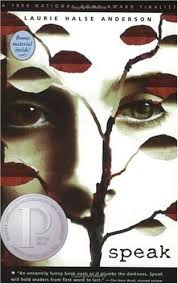The Bible and other Faiths 3
For previous entries, just click on the Bible and Other Faiths label at the end of this post.
Reading the Bible
We are invited to read through Psalm 148. At first glance, it doesn’t seem relevant to the topic at hand. We understand the Creator rules over all his creation, but that’s about it. But what if we remember that the worship of Israel, as expressed in this psalm, was the worship of a people surrounded by other peoples of other religions? (We just have to think of modern-day India, Sri Lanka, or indeed, Malaysia). Gods were associated with the moon and stars, stories told of cosmic battles between different gods, nations ascribed their allegiance to different deities. IG invites us to read through Psalm 148 again. This time, we see that this psalm challenges such thinking! Sun, moon and stars are created things, not gods; this is the One God, not just a god of a particular nation, and all aspects of creation – fertility, weather et al. – are subject to Him. Furthermore, “this psalm goes on to say that this God is to be worshipped under a particular name, revealed to a particular people who have received particular favour.” (Psalm 148:19-20)
As we come to the Bible, then, IG wants to deal with how we approach it. She then makes the claim that, although she has said that we must start with God’s revelation and therefore the Bible, it is, in one sense, impossible. We have to read the Bible being who we are. Before we open the Bible, we already have presuppositions, whether we like it or not. Instead, we can allow the Bible to have priority over our own thinking. So it is in this sense that the Bible is our starting point. This is just how all knowledge develops, we understand things in terms of what we know already, and we need to hear in a language we can understand. God speaks into a dynamic, not static, situation, and so in dealing with this book’s topic, we need to see how he says it as well as what he says.
Secondly, it is not immediately obvious where in the Bible we should "start". The Bible doesn’t mention Hinduism or Buddhism or Islam, in fact, the word "religion" itself cannot be found in the OT. It is important that we do not treat the Bible as a Q&A book. She then notes a common method in approaching the Bible with questions about other religions: the thematic method. Idolatry and the uniqueness of Christ are two oft-treated themes, as many point out Jesus as the only begotten Son, the name above all names, and so on, and others point out the frequent condemnation of idolatry throughout the OT and NT. During the 20th century, more people began to notice some other, more positive themes, regarding God’s concern for all nations. For example, Jonah is sent to Niveneh, Jesus draws the Samaritan woman in, and Melchizedek seems to worship the true God, even though he is outside the covenants.
Interestingly, exclusivists, inclusivists, and pluralists all appeal to the same passages. John 14:6 is an interesting test case. For the exclusivist, this is a clear-cut expression of Jesus pointing to himself as the only way. Inclusivists might argue that our understanding of “only way” needs to be broadened, especially in light of John 1:9. Pluralists might argue that this statement is rooted in faith, it is meaningful for Christians but not others. Two little girls might think that their respective daddies are the best daddies in the world, and they are both right, that is their experience.
And so, IG says, it is quite apparent that the thematic approach is inadequate. For one thing, which theme do we choose? We tend to ask themes according to our questions, and our questions might not necessarily be the best ones to ask. Our questions are all tangled up with various assumptions. However, even more problematically, is that the thematic approach is selective, we choose passages that we think are only relevant to our theme. We might also emphasise one theme over another. Those who see the Bible as only a human book will have no problems with seeing it as contradictory and historically and culturally shaped, with no direct meaning for us today. The opposite problem may arise and we read it ahistorically, without noting for example, to whom particular words are said.
IG now proceeds to describe a canonical approach, drawing on the work of Dan Beeby. Here are some of the ways we can look at the overall pattern of the Bible, which helps us see God’s pattern to his world.
IG wants us to note one more important thing, and that is that the link between nations and gods is one that continues to this day. By that, she means that it is often the case that religion is bound up with our ethnic and national identity. If we see a Sikh, for eg., we immediately think that he must be a Punjabi.
IG ends this chapter by briefly noting 3 levels of reading into a text:
Much of what IG says here will be familiar to those who have read hermeneutics and Bible overview books, but it’s a good reminder all the same, especially in recognising that people with different convictions all appeal to the Bible, and in noting the weaknesses of a thematic approach. I certainly appreciated Beeby’s insights into the place of Israel amongst the nations and how that might inform our thinking today!
We now come to part 2 of the book, Reading the Old Testament.
Next chapter
Peoples surrounding Israel, and their gods
† Expand post
Reading the Bible
We are invited to read through Psalm 148. At first glance, it doesn’t seem relevant to the topic at hand. We understand the Creator rules over all his creation, but that’s about it. But what if we remember that the worship of Israel, as expressed in this psalm, was the worship of a people surrounded by other peoples of other religions? (We just have to think of modern-day India, Sri Lanka, or indeed, Malaysia). Gods were associated with the moon and stars, stories told of cosmic battles between different gods, nations ascribed their allegiance to different deities. IG invites us to read through Psalm 148 again. This time, we see that this psalm challenges such thinking! Sun, moon and stars are created things, not gods; this is the One God, not just a god of a particular nation, and all aspects of creation – fertility, weather et al. – are subject to Him. Furthermore, “this psalm goes on to say that this God is to be worshipped under a particular name, revealed to a particular people who have received particular favour.” (Psalm 148:19-20)
As we come to the Bible, then, IG wants to deal with how we approach it. She then makes the claim that, although she has said that we must start with God’s revelation and therefore the Bible, it is, in one sense, impossible. We have to read the Bible being who we are. Before we open the Bible, we already have presuppositions, whether we like it or not. Instead, we can allow the Bible to have priority over our own thinking. So it is in this sense that the Bible is our starting point. This is just how all knowledge develops, we understand things in terms of what we know already, and we need to hear in a language we can understand. God speaks into a dynamic, not static, situation, and so in dealing with this book’s topic, we need to see how he says it as well as what he says.
Secondly, it is not immediately obvious where in the Bible we should "start". The Bible doesn’t mention Hinduism or Buddhism or Islam, in fact, the word "religion" itself cannot be found in the OT. It is important that we do not treat the Bible as a Q&A book. She then notes a common method in approaching the Bible with questions about other religions: the thematic method. Idolatry and the uniqueness of Christ are two oft-treated themes, as many point out Jesus as the only begotten Son, the name above all names, and so on, and others point out the frequent condemnation of idolatry throughout the OT and NT. During the 20th century, more people began to notice some other, more positive themes, regarding God’s concern for all nations. For example, Jonah is sent to Niveneh, Jesus draws the Samaritan woman in, and Melchizedek seems to worship the true God, even though he is outside the covenants.
Interestingly, exclusivists, inclusivists, and pluralists all appeal to the same passages. John 14:6 is an interesting test case. For the exclusivist, this is a clear-cut expression of Jesus pointing to himself as the only way. Inclusivists might argue that our understanding of “only way” needs to be broadened, especially in light of John 1:9. Pluralists might argue that this statement is rooted in faith, it is meaningful for Christians but not others. Two little girls might think that their respective daddies are the best daddies in the world, and they are both right, that is their experience.
And so, IG says, it is quite apparent that the thematic approach is inadequate. For one thing, which theme do we choose? We tend to ask themes according to our questions, and our questions might not necessarily be the best ones to ask. Our questions are all tangled up with various assumptions. However, even more problematically, is that the thematic approach is selective, we choose passages that we think are only relevant to our theme. We might also emphasise one theme over another. Those who see the Bible as only a human book will have no problems with seeing it as contradictory and historically and culturally shaped, with no direct meaning for us today. The opposite problem may arise and we read it ahistorically, without noting for example, to whom particular words are said.
IG now proceeds to describe a canonical approach, drawing on the work of Dan Beeby. Here are some of the ways we can look at the overall pattern of the Bible, which helps us see God’s pattern to his world.
- The U pattern. From the highs to the lows and back again. We start with God’s good creation, then the Fall, climaxing the death of Jesus, and then little by little the new creation is restored.
- Promise and fulfilment. The NT tells us of the fulfilment in Christ that all the OT points to, and then points on to the complete fulfilment that Christ brings.
- From beginning to end. The Bible moves from the perfect Garden of Eden to the perfect heavenly city in Jerusalem.
- Relationships. Perfect relationships between God, humankind, and creation broken and restored.
- Promises, blessings and covenants. How do the covenants, beginning with Abraham in Genesis 12, work out? Blessings not just for Abraham’s descendants, but through them, for the other nations as well.
IG wants us to note one more important thing, and that is that the link between nations and gods is one that continues to this day. By that, she means that it is often the case that religion is bound up with our ethnic and national identity. If we see a Sikh, for eg., we immediately think that he must be a Punjabi.
IG ends this chapter by briefly noting 3 levels of reading into a text:
- Author-centred reading: the text as a window. The text becomes a window with which we can become acquainted with a world.
- Text-centred reading: the text as picture. We focus on the text itself, noting how it says things, like looking at a picture in detail.
- Reader-centred focus: the text as mirror. What does this mean for me, today?
Much of what IG says here will be familiar to those who have read hermeneutics and Bible overview books, but it’s a good reminder all the same, especially in recognising that people with different convictions all appeal to the Bible, and in noting the weaknesses of a thematic approach. I certainly appreciated Beeby’s insights into the place of Israel amongst the nations and how that might inform our thinking today!
We now come to part 2 of the book, Reading the Old Testament.
Next chapter
Peoples surrounding Israel, and their gods
† Expand post
Labels: Bible reading, books, The Bible and Other Faiths












Followed your link from Agora and have been browsing through over the past couple of days...I've been quite interested in Agora eversince I stumbled upon it, but must admit some of the issues are a bit remote (I've been much out of touch studying in the UK for the past 3+ years and anyway, unfortunately, was never engaged in such exchanges)
It was pleasant to learn that it had a member based in the UK, though! Which church do you attend in London?
-Sook-
Post a Comment
<< Home